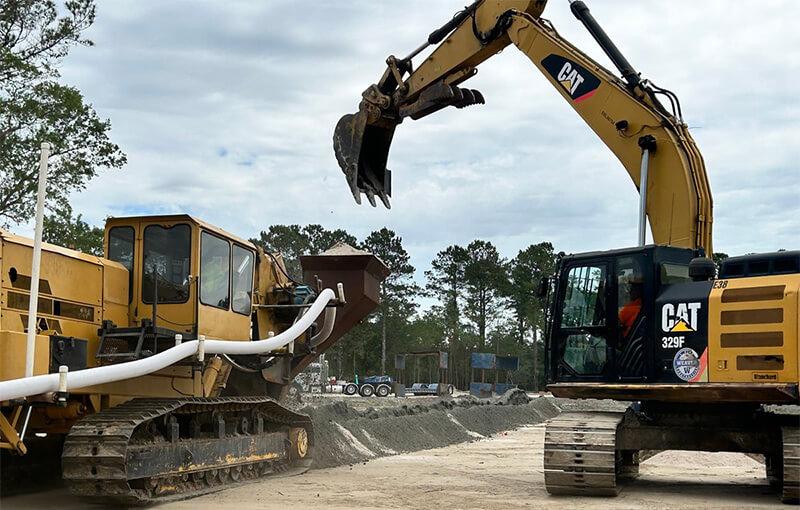The southeastern United States, encompassing the diverse terrains of South Carolina, North Carolina, and Georgia, presents unique challenges and opportunities for construction projects. Among the crucial considerations for successful construction is effective dewatering.
Let’s dive into the top factors that coastal construction companies should keep in mind when tackling dewatering on their job sites!
1. Type of Land
Before embarking on any dewatering project, a thorough understanding of the land is essential. The topography, soil composition, and geological features vary across the southeastern states.
In South Carolina, for example, the Lowcountry is characterized by flat plains and swamps, while North Carolina boasts diverse landscapes from coastal plains to mountainous regions. Georgia encompasses a mix of coastal areas, farmland, and forested regions. Tailoring your dewatering strategy to the specific characteristics of the land is the first step towards success.
2. Signs of Soil Erosion or Instability
Signs of soil erosion or instability should not be overlooked. Visual inspections and geological assessments can reveal critical information about the site’s conditions. Cracks in the soil, uneven settling, or changes in vegetation can be indicative of potential challenges that may require specialized dewatering solutions.
3. Determining the Dewatering Method Required
Different construction sites demand different dewatering methods. The choice between wellpoint systems, sump pumping, or sock drain dewatering depends on factors such as the depth of water tables, soil permeability, and the overall project scope. Tailoring the dewatering method to the unique characteristics of the site is crucial for efficiency and cost-effectiveness.
4. Evaluating How Weather Will Factor In
Weather plays a significant role in dewatering projects. In the southeastern states, where the climate varies from humid subtropical to humid continental, rainfall can be unpredictable. Monitoring weather forecasts and planning dewatering activities accordingly is essential to prevent setbacks due to unexpected precipitation.
5. Using the Right Dewatering Pumps & Equipment
Investing in the right dewatering pumps and equipment is paramount for success. The selection should consider factors such as the required flow rates, the depth of groundwater, and the type of soil. Having reliable and well-maintained equipment ensures the smooth execution of dewatering activities. That’s where we come in!
6. Water Table Conditions of the Ground
Knowledge of the water table conditions is fundamental for effective dewatering. In areas where the water table is high, additional precautions may be necessary to prevent groundwater from interfering with construction activities. Understanding the fluctuations in the water table over the course of the project is crucial for planning and execution.
7. Rules for Discharging Water
Compliance with local regulations regarding water discharge is non-negotiable. Different states and municipalities may have specific rules governing the quality and quantity of water that can be discharged. Understanding and adhering to these regulations ensures legal and environmentally responsible dewatering practices.
8. Using Sump Pumps
Sump pumps are invaluable tools in dewatering projects, especially in areas with frequent rainfall or high water tables. These pumps efficiently remove water from low-lying areas, preventing water accumulation that could compromise construction stability.
9. Using Dewatering Bags
Dewatering bags offer an eco-friendly solution for filtering and capturing sediment from discharged water. Implementing these bags helps maintain environmental compliance by preventing sediment runoff into nearby water bodies.
10. Permission or Permits
Before commencing any dewatering activities, obtaining the necessary permissions and permits is imperative. Local authorities may require permits for dewatering, especially if it involves discharging water into storm drains or natural water bodies. Ensuring legal compliance from the outset prevents delays and potential legal issues down the line.
Successful dewatering in coastal South Carolina, North Carolina & Georgia demands a thorough understanding of the local conditions, adherence to regulations, and the strategic application of appropriate dewatering methods and equipment. By carefully considering these factors, construction companies can navigate the complexities of dewatering with confidence, ensuring the smooth progression of their projects.
We’re here to help. Contact us today to discuss your upcoming construction project and dewatering needs!

